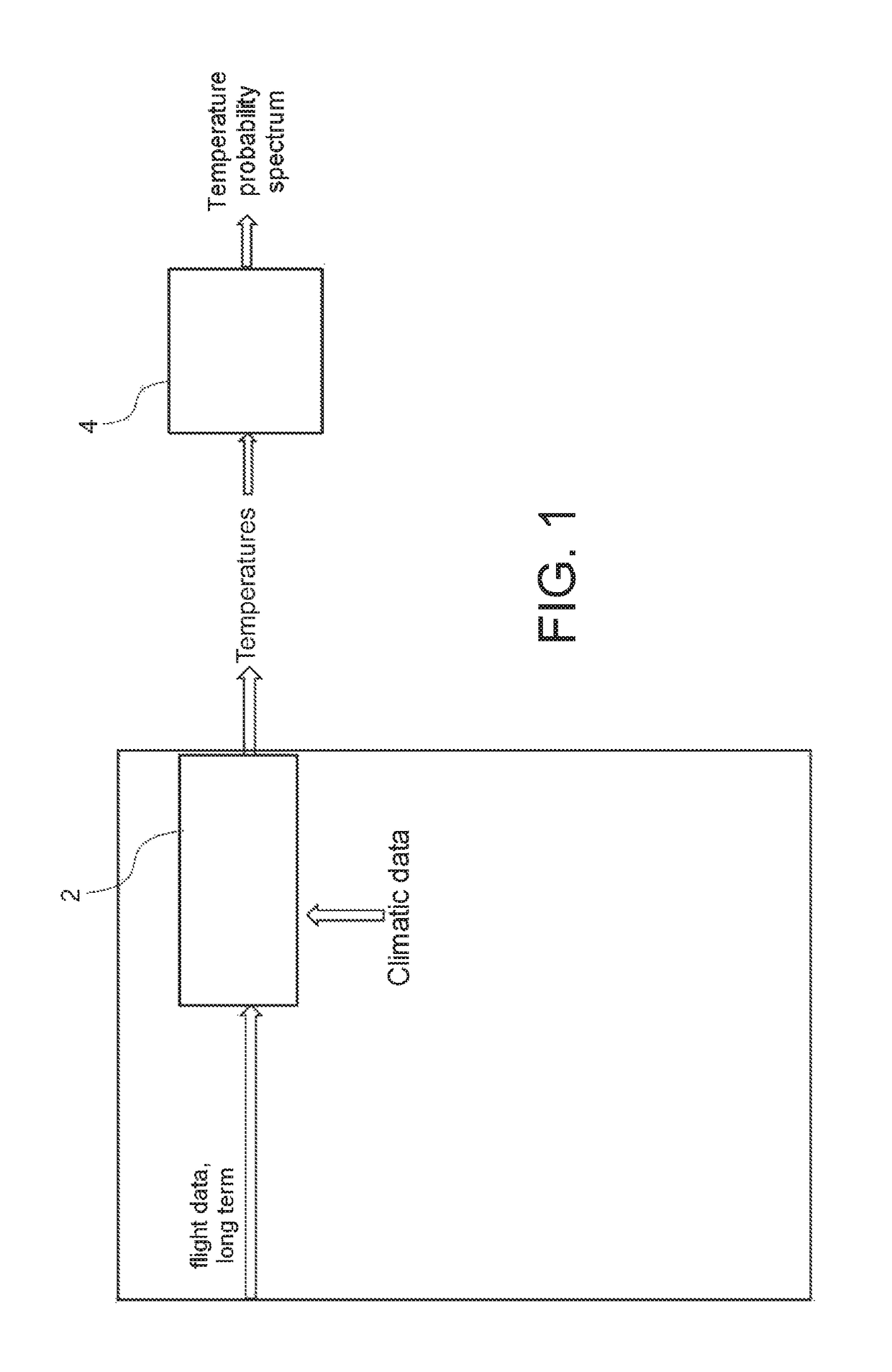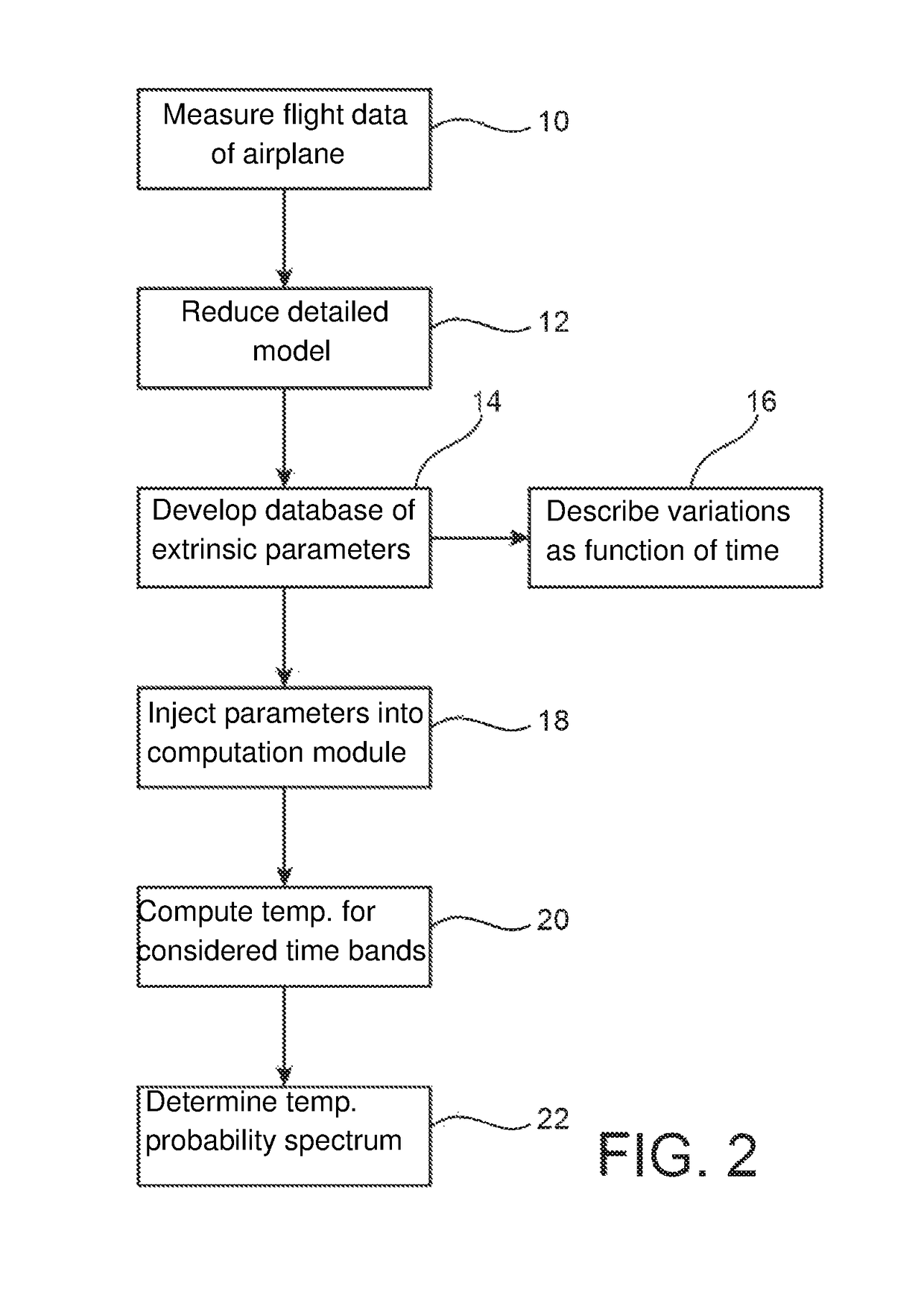Method for predicting temperatures which are tolerable by a component, a piece of equipment or an airplane structure
a technology for components and airplane structures, applied in the field of thermodynamic analysis, can solve the problems of estimating components, the probability of being exceeded is extremely rare, and the theoretically computed level is far from being reached, so as to improve the accuracy and the definition of temperature range predictions
- Summary
- Abstract
- Description
- Claims
- Application Information
AI Technical Summary
Benefits of technology
Problems solved by technology
Method used
Image
Examples
Embodiment Construction
[0020]The invention will be described in a particular example of implementation of the method according to the invention intended to define a thermal and operational model which would introduce extremely hot or extremely cold temperatures, with a known probability of occurrence. This model is established through the measurement and the analysis of a large number of climatic conditions which could be encountered by an airplane for a large number of successive flights made by this airplane during a full period of operation of the airplane, a year, for example, by taking into consideration the climatic conditions of the airports frequented and the operations specific to the airport such as, for example, the rotation time between two flights, the taxiing time between the set-off point and the take-off runway, or any other parameter that might influence the temperatures.
[0021]A thermal model should be understood to be a numerical model (for example, of finite differences type), making it...
PUM
| Property | Measurement | Unit |
|---|---|---|
| altitude | aaaaa | aaaaa |
| temperatures | aaaaa | aaaaa |
| temperature | aaaaa | aaaaa |
Abstract
Description
Claims
Application Information
 Login to View More
Login to View More - R&D
- Intellectual Property
- Life Sciences
- Materials
- Tech Scout
- Unparalleled Data Quality
- Higher Quality Content
- 60% Fewer Hallucinations
Browse by: Latest US Patents, China's latest patents, Technical Efficacy Thesaurus, Application Domain, Technology Topic, Popular Technical Reports.
© 2025 PatSnap. All rights reserved.Legal|Privacy policy|Modern Slavery Act Transparency Statement|Sitemap|About US| Contact US: help@patsnap.com



